At this time of the year dried mushrooms are starting to be the main source of mushrooms for my kitchen. In my opinion drying is by far the easiest and most efficient way of preservation of the wild mushrooms. I use Excalibur 9-Tray Food Dehydrator, but I am sure that any dehydrator should work. Even oven can sometimes be utilized if no other appliance is available. The air drying is certainly another option.
The main thing for mushroom drying is to keep heat at minimum, while air flow is maintained. Any higher heat settings will easily damage and burn mushrooms. That is providing that your dehydrator does have some temperature control. This technique certainly requires longer time, but it is worth it.
When preparing mushrooms for drying, make sure that pieces are roughly same size. At least stick to that rule for individual trays in dehydrator, so that everything on one tray is ready at the same time. I do prefer some of the species dried whole (e.g. Lactarius, Suillus and Blewits), regardless of the long time it takes.
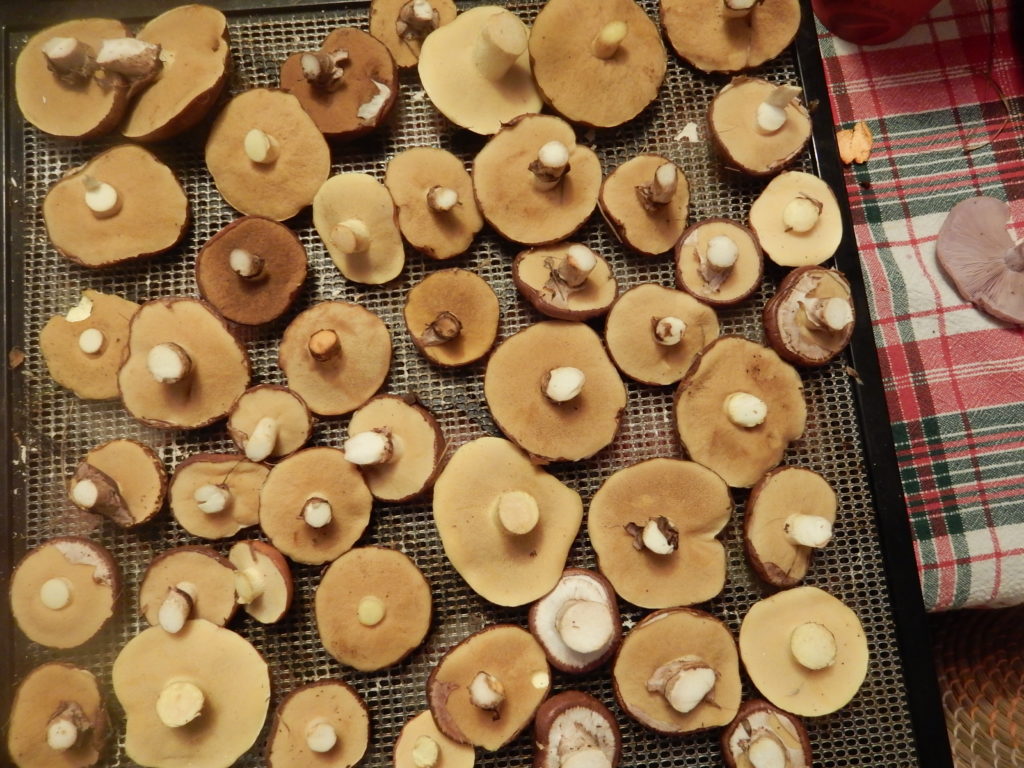
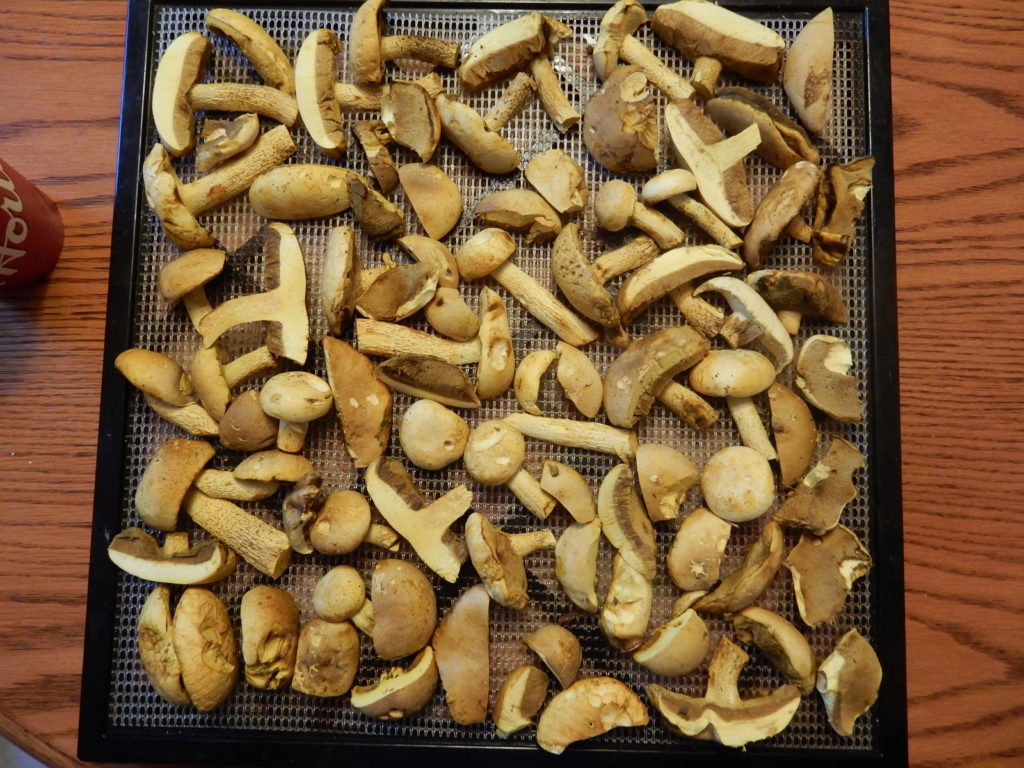
The end result should be dried pieces of mushroom, but still somewhat pliable.
The best way of storage is probably glas jars with airtight lids, but I do use ziplock bags with great success, too.
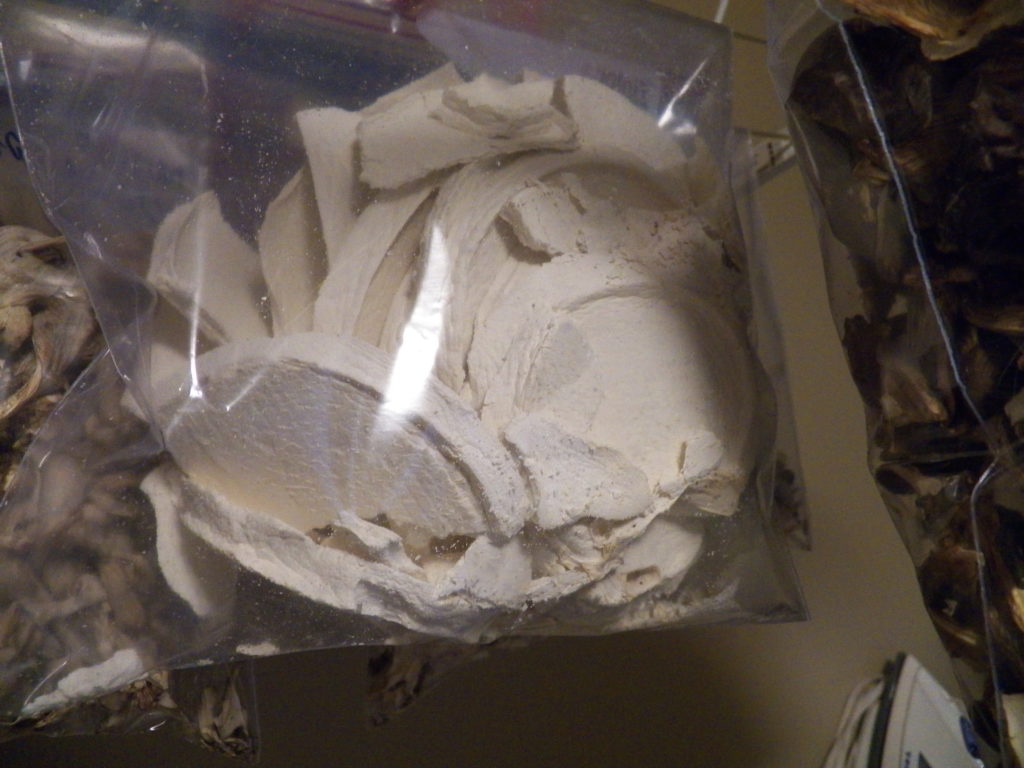
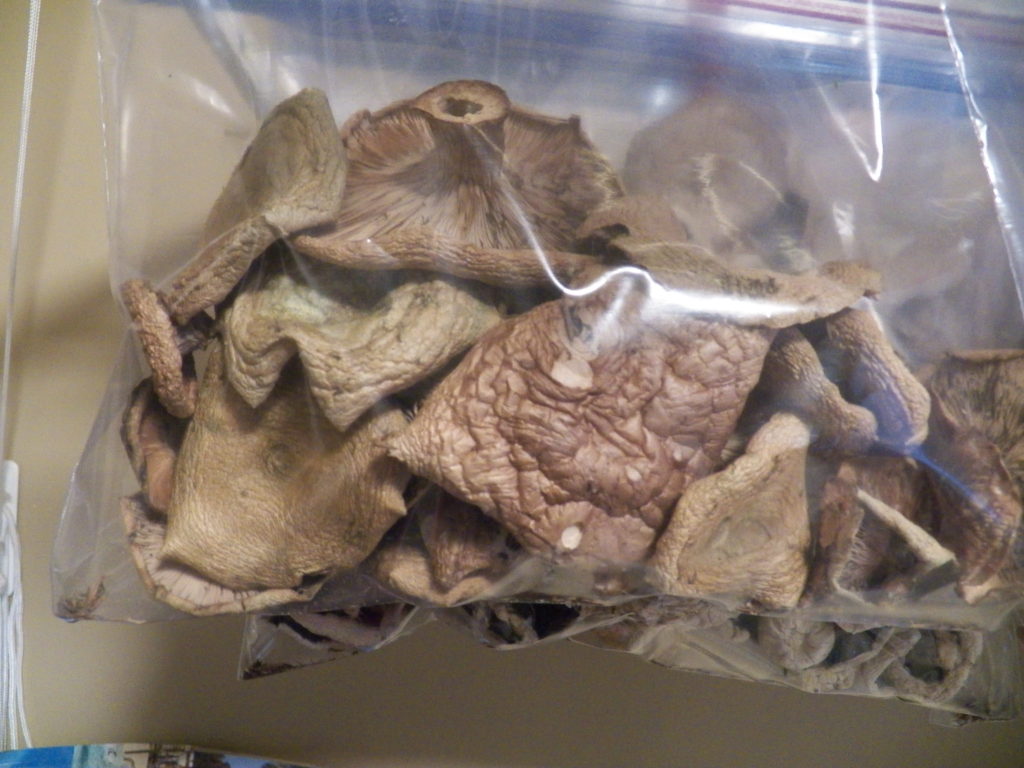
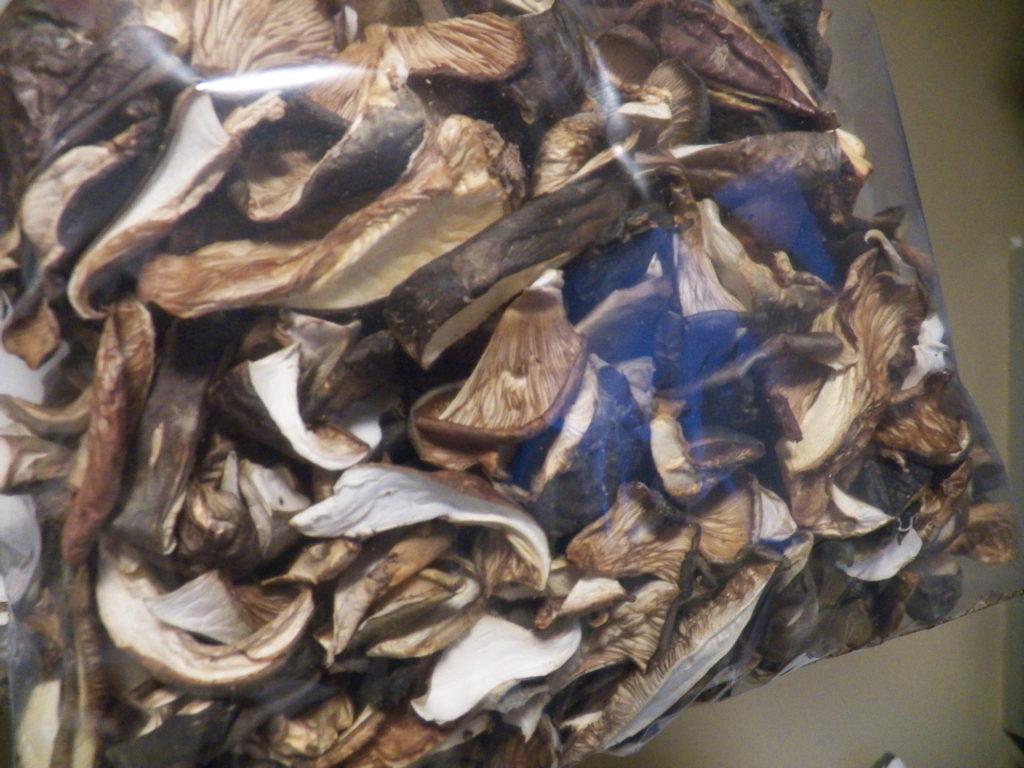
The big advantages of dried mushrooms can be summed in several main points:
- the shelf life is almost indefinite
- the flavors are concentrated and enhanced (for majority of species that I ever tried)
- the issues with some of the species (e.g. gastric upsets from Suillus and Leccinums) are totally eliminated
- works even for mildly bug infested specimens
As far as usage goes, it is quite simple. Re-hydrate mushrooms in water or vine for 20-30 minutes; occasionally agitate mixture to get grit and debris to fall to the bottom. Use re-hydrated mushrooms as you would fresh ones. The liquid should be strained through cheesecloth or chinos strainer and use in cooking.
